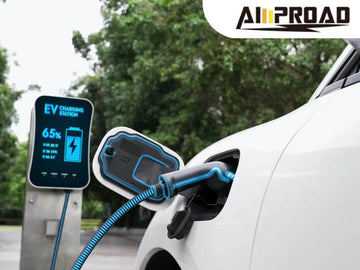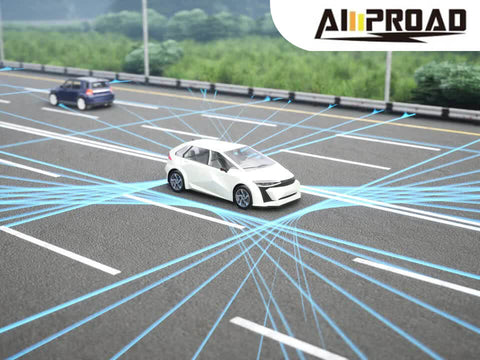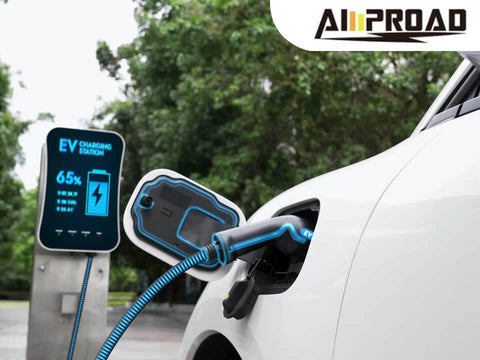
Electric vehicles (EVs) are rapidly gaining popularity due to their environmental benefits and lower operating costs. However, widespread EV adoption hinges on the development of a robust charging infrastructure. While convenient and fast charging options exist, challenges like limited station availability, slow charging speeds, and compatibility issues can hinder the EV experience. Addressing these issues is crucial to ensuring a smooth transition to a more sustainable transportation future.
Lack of Availability and Distribution
One of the biggest hurdles for EVs is the lack of readily available charging stations. Compared to the dense network of gas stations blanketing most areas, finding a place to top up your electric car can be a challenge, especially for long road trips. This becomes even more concerning when considering rural areas. While urban centers tend to have a higher concentration of charging stations, venturing outside city limits can leave EV drivers feeling like they're on a charger scavenger hunt.
The issue goes beyond simple quantity. Access to charging is also unequal across different communities. Low-income neighborhoods and apartment buildings often lack the infrastructure needed for convenient home charging. This creates an accessibility barrier, disproportionately impacting those who might benefit most from the cost savings and environmental advantages of electric vehicles.
Technical Challenges
One of the foremost technical challenges facing the widespread adoption of Electric Vehicles (EVs) revolves around the infrastructure supporting their charging needs. These challenges encompass compatibility issues, strains on the electrical grid, and concerns regarding reliability.
Compatibility Issues:
EV owners encounter a maze of different charging standards and connector types, leading to confusion and inconvenience. The variations include Level 2 charger, which provides slower charging at locations like homes and workplaces, and DC Fast Chargers, offering rapid charging for longer journeys. Moreover, competing connector standards like Tesla's proprietary connector and the more universal CCS (Combined Charging System) add to the complexity, making it cumbersome for drivers to find compatible charging stations.
Grid Strain and Upgrading Needs:
The rapid influx of EVs poses a strain on the existing electricity grid infrastructure. The increased demand for power during peak charging times could overwhelm the grid, leading to potential disruptions and even blackouts. Addressing this challenge requires significant investments in upgrading the grid to handle the additional load from EV charging. However, these upgrades come with hefty price tags, presenting a financial hurdle for many municipalities and utility companies.
Downtime and Reliability Problems:
Another critical concern is the reliability of EV charging infrastructure. Malfunctioning chargers or network outages can significantly disrupt the accessibility of charging stations, leaving EV drivers stranded without power. This downtime not only inconveniences users but also undermines confidence in the reliability of EVs as a viable transportation option. Ensuring uptime and reliability of charging stations is paramount for fostering trust and encouraging broader EV adoption.
User Experience Issues
Ensuring a positive user experience is crucial for the widespread acceptance of Electric Vehicles (EVs). However, several issues related to EV charger can hinder this goal, affecting everything from charging speeds to payment methods and station availability.
Slow Charging Speeds:
One of the primary concerns for EV drivers is the time it takes to recharge their vehicles. Level 2 EV charger, commonly found at homes and workplaces, offer slower charging rates compared to gasoline refueling, impacting trip planning and convenience. While overnight charging may suffice for daily commuting, longer journeys require strategic pit stops to accommodate the extended charging times.
Inconsistent Pricing and Payment Methods:
Another frustration for EV owners is the lack of standardized pricing structures across charging networks. Different operators impose varying rates for charging services, leading to confusion and uncertainty about the cost of refueling. Moreover, navigating through disparate payment methods across different charging networks adds to the complexity, making it challenging for users to seamlessly access charging services.
Competition for Chargers and Station Availability:
As the popularity of EVs continues to soar, the demand for charging stations often outstrips the available infrastructure. This imbalance results in long waiting times and increased competition for chargers, causing frustration among EV drivers. The limited availability of charging stations, including Tesla destination charger, coupled with the burgeoning EV adoption rate, exacerbates the problem, further underscoring the need for expanded charging infrastructure.
Addressing these user experience issues is essential for fostering a more convenient and accessible EV charging ecosystem. Streamlining charging processes, standardizing pricing models, and expanding the network of charging stations are critical steps toward enhancing the overall EV ownership experience. By prioritizing user needs and addressing these challenges, we can accelerate the transition to a more sustainable transportation future.
Looking Forward: Potential Solutions
As we navigate the challenges associated with Electric Vehicle (EV) charging infrastructure, it's imperative to look forward and explore potential solutions that can pave the way for a more seamless and sustainable future of transportation.
Government Incentives and Investment:
Governments play a pivotal role in driving the expansion of EV charging infrastructure through targeted policies and financial incentives. By offering grants, tax credits, and subsidies, governments can encourage private investment in charging infrastructure development. Additionally, policies that prioritize grid upgrades and innovation in charging technologies can further bolster the growth of EV infrastructure, ensuring that it keeps pace with the increasing demand for electric mobility.
Collaboration Between Stakeholders:
Collaboration among key stakeholders, including utilities, automakers, and charging companies, is essential for addressing the complexities of EV charging infrastructure. By working together, these stakeholders can develop standardized solutions that streamline the deployment of charging stations and improve interoperability between different charging networks. Moreover, collaboration can facilitate the sharing of best practices and resources, fostering a more cohesive and efficient approach to EV infrastructure development.
Technological Advancements:
Advancements in technology hold tremendous potential for overcoming the technical challenges associated with EV charging. Faster charging technologies, such as high-power DC fast chargers and wireless charging systems, can significantly reduce charging times and enhance the convenience of EV ownership. Furthermore, innovations in grid management software and hardware enable more efficient utilization of electricity resources, minimizing strain on the grid and optimizing charging infrastructure deployment. User-friendly interfaces and mobile apps also play a crucial role in enhancing the overall EV charging experience, making it easier for drivers to find, reserve, and pay for charging sessions.
By leveraging government incentives, fostering collaboration among stakeholders, and embracing technological advancements, we can overcome the challenges facing EV charging infrastructure and accelerate the transition to a cleaner, more sustainable transportation system. Through concerted efforts and innovative solutions, we can build a future where EV charging is accessible, efficient, and seamlessly integrated into our everyday lives.
FAQs / People Also Ask
Why is EV charging infrastructure important?
EV charging infrastructure is crucial for supporting the widespread adoption of Electric Vehicles. It provides EV owners with convenient access to charging stations, enabling them to recharge their vehicles and extend their driving range.
What types of EV chargers are available?
There are several types of EV chargers, including Level 1, Level 2 charger, and DC Fast Chargers. Level 1 chargers use a standard household outlet and provide the slowest charging rate, while Level 2 chargers offer faster charging and are commonly found in homes, workplaces, and public locations. DC Fast Chargers provide rapid charging for longer journeys and are typically located along highways and major routes.
How long does it take to charge an EV?
The charging time for an EV depends on various factors, including the battery size, charger type, and charging rate. Level 1 chargers typically take several hours to fully charge an EV, while level 2 electric car charger can charge a vehicle in a matter of hours. DC Fast Chargers offer the fastest charging speeds, capable of providing a significant charge in as little as 30 minutes.
What are the common issues with EV charging infrastructure?
Common issues with EV charging infrastructure include compatibility issues with different charger types and connector standards, strains on the electrical grid, downtime and reliability problems with charging stations, and challenges related to user experience, such as slow charging speeds and inconsistent pricing.
How can these issues be addressed?
These issues can be addressed through a combination of government incentives and investment in infrastructure development, collaboration between stakeholders to develop standardized solutions, and technological advancements in charging technology and grid management.
Are there any government incentives for installing EV charging stations?
Yes, many governments offer incentives such as grants, tax credits, and subsidies to encourage the installation of EV charging stations. These incentives help offset the costs associated with infrastructure development and promote the expansion of EV charging networks.
What is the future outlook for EV charging infrastructure?
The future outlook for EV charging infrastructure is promising, with continued advancements in technology, increased investment, and growing public awareness driving the expansion of charging networks. As EV adoption rates continue to rise, we can expect to see further innovations and improvements in charging infrastructure to meet the needs of an increasingly electrified transportation system.




